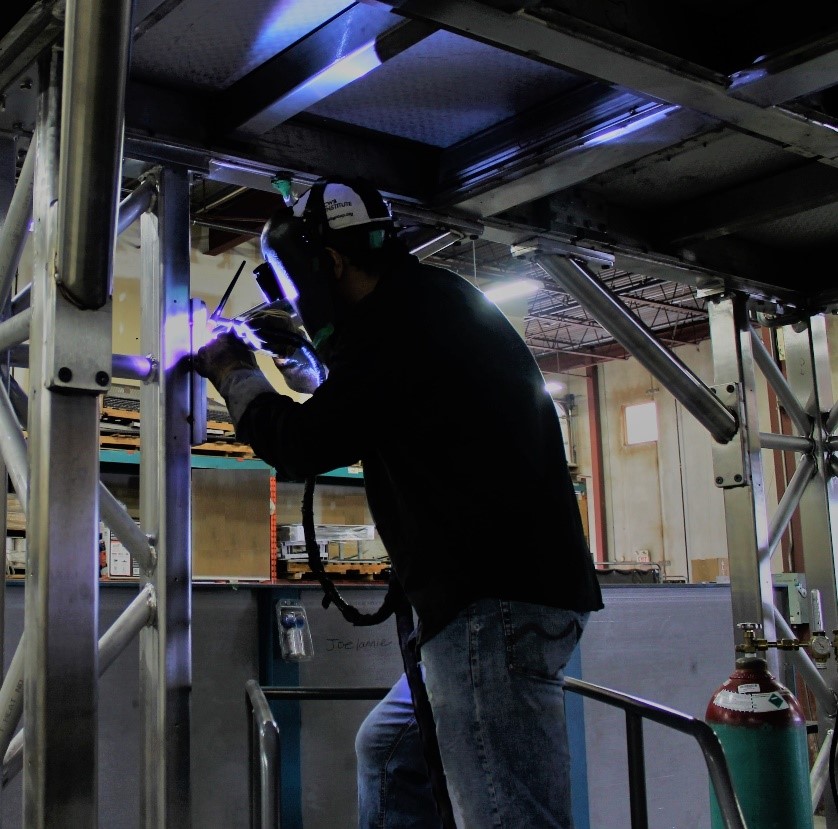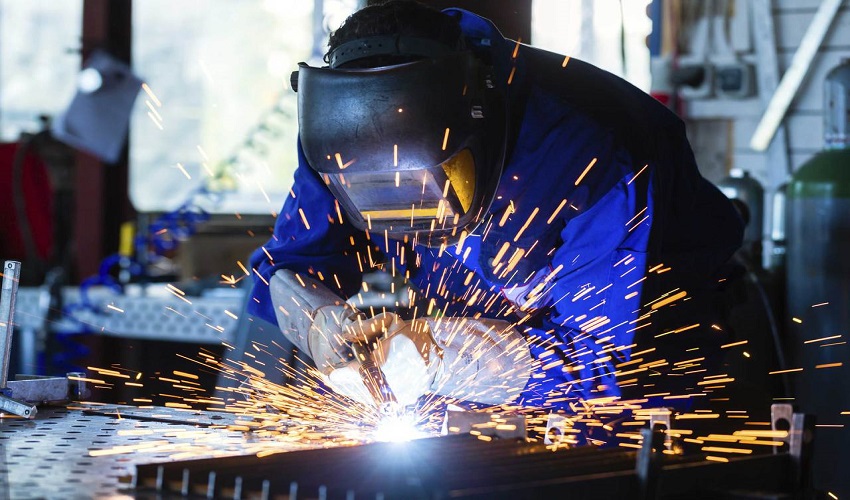Reputable Steel Fixing Solutions: Making Sure Structural Integrity
Reputable Steel Fixing Solutions: Making Sure Structural Integrity
Blog Article
Comprehensive Analysis of Cutting-Edge Techniques in Steel Fabrication Industry
As the steel manufacture industry continues to develop, the combination of cutting-edge strategies has actually ended up being vital for staying competitive and meeting the demands of modern manufacturing standards. In this vibrant industry where technology plays an essential duty, recognizing the subtleties of these innovative strategies is not simply an option but a requirement for those looking to create ahead in the ever-evolving globe of steel fabrication.
Laser Cutting Developments
In the realm of steel manufacture, laser cutting improvements have actually reinvented the precision and performance of metal shaping processes. By taking advantage of the power of focused laser beams, makers can currently accomplish unequaled degrees of accuracy when cutting with various types of metals. This technology allows intricate layouts to be performed with very little material wastefulness, making it a cost-effective solution for sectors needing high precision components.
Among the essential benefits of laser cutting is its ability to handle a variety of materials, including stainless-steel, aluminum, and carbon steel, effortlessly. The procedure produces clean, burr-free edges, getting rid of the need for additional finishing steps. Furthermore, the non-contact nature of laser reducing decreases the risk of material contamination, resulting in greater high quality end products.
Furthermore, laser reducing makers can be programmed to make swift, exact cuts, dramatically decreasing manufacturing time contrasted to standard cutting techniques. This speed and precision make laser reducing specifically ideal for automation atmospheres where performance is paramount. As innovation remains to breakthrough, laser cutting is poised to play a progressively vital role in the steel manufacture industry.

CNC Machining Innovations
The development of CNC machining innovations has ushered in a brand-new period of precision and effectiveness in the steel construction sector. Computer System Numerical Control (CNC) makers have reinvented steel fabrication by using exceptional accuracy and repeatability in the production process. Alpha reo. One of the vital technologies in CNC machining is the combination of innovative software program systems that make it possible for real-time monitoring and modifications, bring about enhanced performance and top quality control
Moreover, the growth of multi-axis CNC equipments has actually enabled for the fabrication of complex steel parts with elaborate styles that were previously testing to produce. These equipments can do a vast array of machining procedures, including milling, boring, transforming, and grinding, all with high degrees of precision.
Furthermore, the incorporation of automation and robotics in CNC machining has structured production procedures, minimized lead times, and reduced the margin of mistake. This assimilation of cutting-edge innovations not just boosts effectiveness yet also ensures consistent top quality across all produced steel components. Finally, CNC machining technologies remain to drive advancements in the steel construction sector, setting new criteria for precision and productivity.
Automated Welding Technologies
Automated welding technologies have actually changed the steel manufacture industry, boosting performance and precision in the welding procedure. These cutting-edge technologies make use of computer-controlled systems to automate the welding process, resulting in higher productivity degrees and boosted weld top quality. One of the vital advantages of automated welding is the capability to perform complex welds with regular precision, reducing the likelihood of mistakes and revamp.
Robot welding systems are at the leading edge of automated welding innovations, providing unequaled rate and accuracy. These systems can manage a wide variety of welding tasks, from straightforward to elaborate, with simplicity (metal fabrication melbourne). By utilizing sophisticated sensing units and software, robot welders can adjust to variations in product and joint geometry, guaranteeing an attire and dependable weld
In addition, automated welding innovations boost office safety by lessening the direct exposure of go to website human welders to harmful fumes and intense warm. As the steel manufacture sector continues to develop, including automated welding technologies will be necessary for companies seeking to remain competitive and satisfy the expanding demands for top notch bonded items.
Robotics Integration in Fabrication
Using robot systems in manufacture processes has become a critical method for boosting performance and accuracy in modern production settings. Robotics integration in steel manufacture uses a myriad of benefits, consisting of enhanced performance, boosted quality control, and enhanced security actions. These sophisticated robotic systems are furnished with innovative sensing units and programs capabilities, enabling them to carry out elaborate jobs with a high level of accuracy and repeatability.
Among the vital benefits of robotics combination in steel construction is the capability to automate repetitive jobs, such as material handling, cutting, welding, and setting up processes. This not just accelerates production cycles but additionally decreases the risk of human mistake, causing higher overall item top quality. In addition, robots can operate 24/7, dramatically improving production result and meeting limited job due dates.

3D Printing in Steel Manufacturing
Having reinvented the steel manufacture market via robotics combination, the growing expedition of 3D printing in steel production is positioned to further advancement the world of modern-day production methods. 3D printing, likewise called additive manufacturing, uses extraordinary design freedom and complexity, allowing the creation of complex steel frameworks that were previously unattainable with traditional manufacturing techniques. By utilizing computer-aided layout (CAD) software, manufacturers can precisely control the layer-by-layer deposition of steel material, resulting in parts with boosted geometries and capabilities.
Among the vital benefits of 3D printing in steel production is its capacity to reduce material waste considerably. Unlike subtractive manufacturing procedures where excess material is cut away, 3D printing just utilizes the required amount of steel required for the last part. This effectiveness not only leads to cost financial savings yet likewise lines up with lasting manufacturing techniques by lessening environmental influence.
In addition, 3D printing allows fast prototyping and customization, allowing for the manufacturing of little batches of intricate steel parts with short lead times. As the technology remains to develop and become more obtainable, its assimilation right into mainstream steel fabrication procedures is expected to drive advancement and effectiveness across the industry.
Final Thought
To conclude, the steel fabrication industry has seen substantial improvements in strategies such as laser cutting, CNC machining, automated welding, robotics integration, and 3D printing. These cutting-edge innovations have reinvented the check over here means steel products are manufactured, bring about enhanced effectiveness, cost-effectiveness, and accuracy. Continued financial investment in these cutting-edge strategies is critical for the sector to remain competitive and satisfy the demands of modern-day production procedures.
As the steel fabrication industry continues to advance, the combination of advanced methods has ended up being vital for remaining affordable and satisfying the demands of modern-day production criteria.One of the crucial advantages of laser cutting is its ability to manage a large variety of materials, consisting of stainless steel, aluminum, and carbon steel, with convenience.Automated welding modern technologies have transformed the steel manufacture market, improving effectiveness and accuracy in the welding procedure.Having revolutionized the steel manufacture market with robotics combination, the burgeoning expedition of 3D printing in steel production is poised to further advance read here the realm of modern-day production techniques.In conclusion, the steel construction sector has seen substantial improvements in techniques such as laser cutting, CNC machining, automated welding, robotics combination, and 3D printing.
Report this page